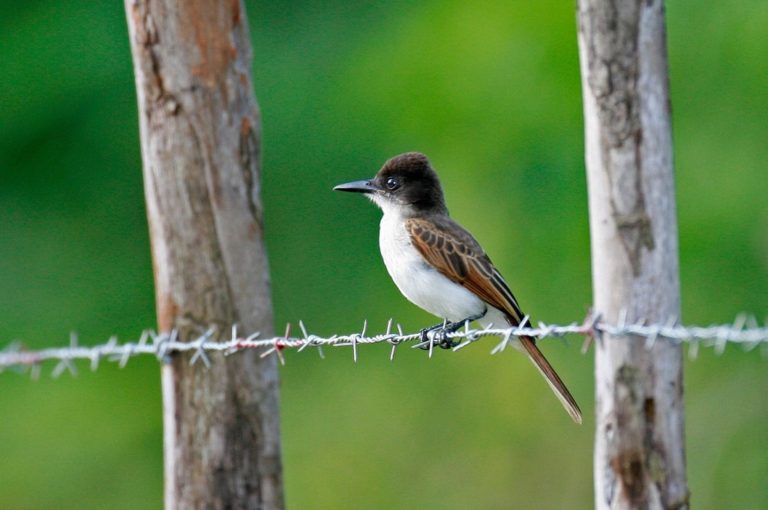Birdfinding.info ⇒ Generally scarce, but reliably found along Zapotén Road, especially around El Aguacate. Locally common in some parts of the Cordillera Central. Most reports from resort areas in the eastern D.R. actually refer to misidentified Gray Kingbirds.
Hispaniolan Kingbird
Tyrannus gabbii
Family: Tyrannidae
Endemic to Hispaniola, where it is uncommon and local in montane forests, mainly in the Cordillera Central, Sierra de Bahoruco, and mountains of Haiti’s Tiburon Peninsula.
Occasionally found in lowland scrub and dry forest elsewhere in the southern Dominican Republic, east to the Punta Cana area.
Probably more widely distributed, but many reports are unreliable due to confusion with Gray Kingbird.
Identification
Brown upperparts with bright rusty margins in the wings and tail, creamy-white underparts, and a sooty cap. Has the general apperance of a pale-bellied Myiarchus flycatcher.
Bright yellow crown patch is usually concealed.
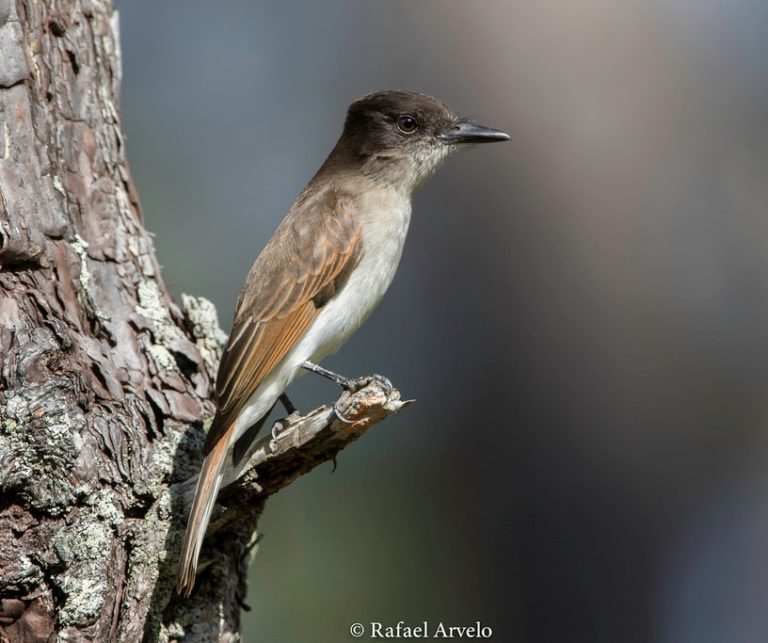
Hispaniolan Kingbird. (Independencia, Dominican Republic; January 16, 2016.) © Rafael V. Arvelo C.
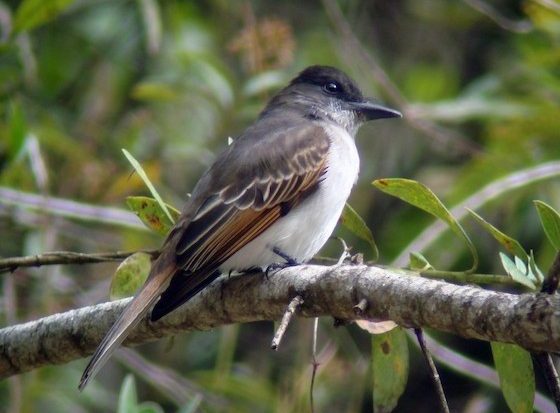
Hispaniolan Kingbird. (El Aguacate, Dominican Republic; December 30, 2018.) © Louis Imbeau
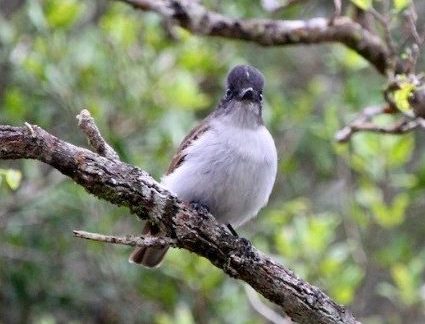
Hispaniolan Kingbird, showing a sliver of its yellow crown patch. (Zapotén, Dominican Republic; March 9, 2014.) © Stephen Gast
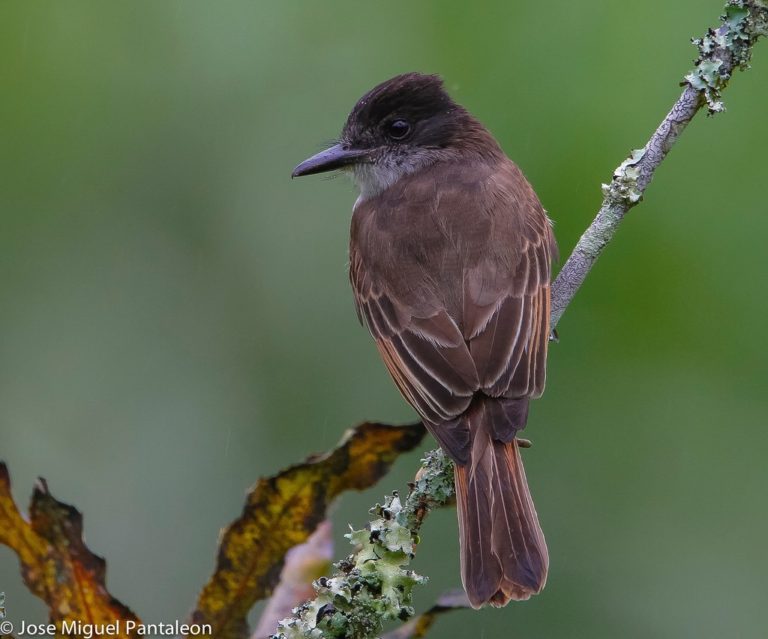
Hispaniolan Kingbird. (Cordillera Central, Dominican Republic; March 29, 2013.) © José Miguel Pantaleón

Hispaniolan Kingbird. (Independencia, Dominican Republic; January 16, 2016.) © Rafael V. Arvelo C.

Hispaniolan Kingbird—note the diverse coloration of the wing feather margins. (Cordillera Central, Dominican Republic; December 24, 2012.) © José Miguel Pantaleón
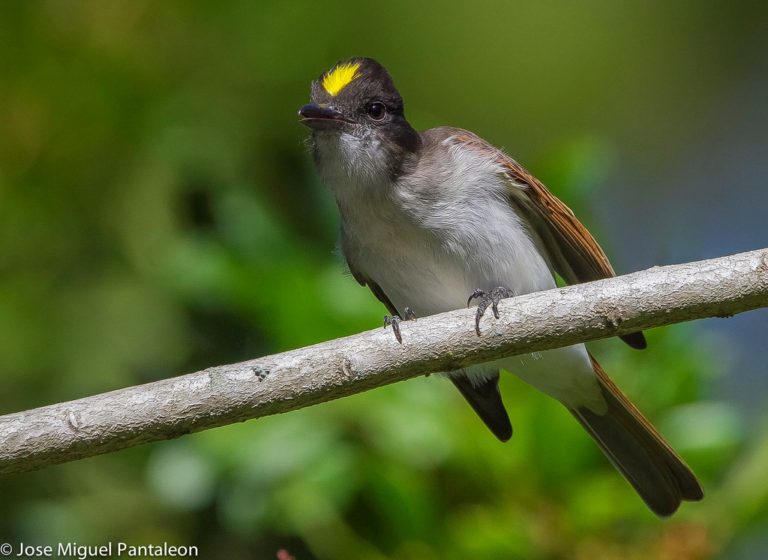
Hispaniolan Kingbird, flashing its bright yellow crown patch. (Cordillera Central, Dominican Republic; November 23, 2013.) © José Miguel Pantaleón
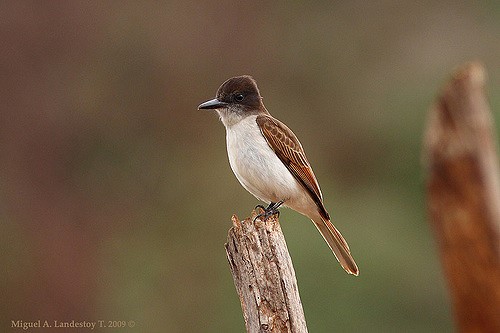
Hispaniolan Kingbird. (Puerto Escondido, Dominican Republic; May 3, 2009.) © Miguel A. Landestoy T.
Cf. Stolid Flycatcher. Within its range, most likely to be confused with Stolid Flycatcher, but lacks Stolid’s ashy-gray breast and yellow belly. Stolid’s upperparts are cold gray with bold whitish edges on the wing feathers, whereas Hispaniolan Kingbird is brown with rufous highlights on the wings and tail.
Cf. Other Kingbirds. Eastern Kingbird has dark gray upperparts, a blackish crown (which contrasts crisply with white throat), a smaller bill, and a square white-tipped tail. Gray Kingbird is pale gray above, with a blackish mask.
Does not normally occur with Loggerhead or Puerto Rican Kingbird, both of which are similar to Hispaniolan, but lack its striking rusty highlights.
Notes
Monotypic species.
Traditionally considered a subspecies of Loggerhead Kingbird, but Garrido et al. (2009) present persuasive evidence that Hispaniolan is best regarded as separate species based on differences in plumage and vocalizations.
References
eBird. 2019. eBird: An online database of bird distribution and abundance. Cornell Lab of Ornithology, Ithaca, N.Y. http://www.ebird.org. (Accessed February 16, 2019.)
Garrido, O.H., J.W. Wiley, and G.B. Reynard. 2009. Taxonomy of the Loggerhead Kingbird (Tyrannus caudifasciatus) Complex (Aves: Tyrannidae). Wilson Bulletin 121: 703-713.
Latta, S., C. Rimmer, A. Keith, J. Wiley, H. Raffaele, K. McFarland, and E. Fernandez. 2006. Birds of the Dominican Republic and Haiti. Princeton University Press, Princeton, N.J.
Mobley, J., and E. de Juana. 2019. Loggerhead Kingbird (Tyrannus caudifasciatus). In Handbook of the Birds of the World Alive (J. del Hoyo, A. Elliott, J. Sargatal, D.A. Christie, and E. de Juana, eds.). Lynx Edicions, Barcelona. https://www.hbw.com/node/57485. (Accessed February 16, 2019.)
Raffaele, H., J. Wiley, O. Garrido, A. Keith, and J. Raffaele. 1998. A Guide to the Birds of the West Indies. Princeton University Press, Princeton, N.J.
